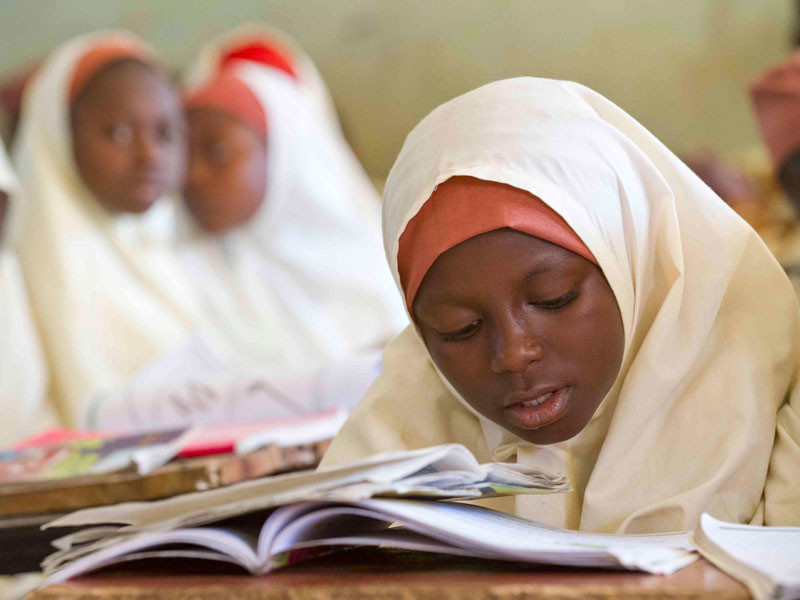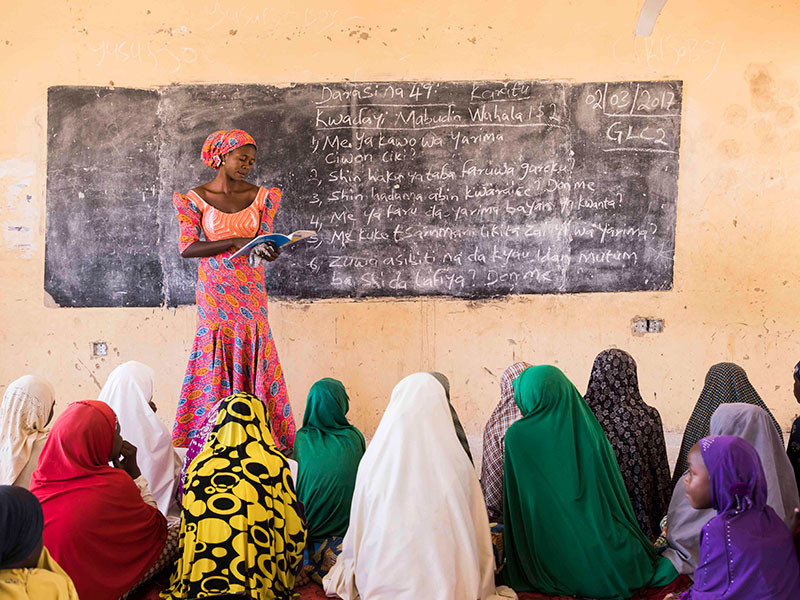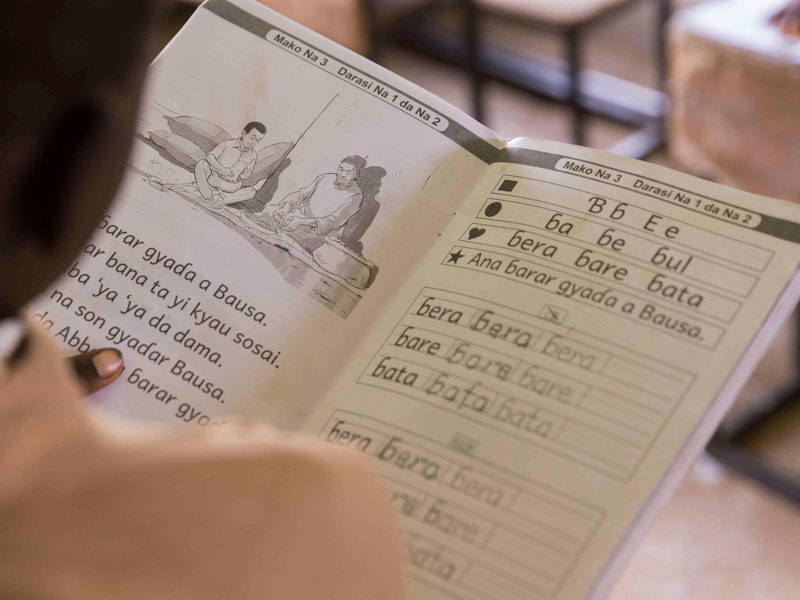It is a scenario that is more common than people realize: A teacher stands in front of the chalkboard speaking to the class on the first day of school, but some students aren’t comprehending what she’s saying.
When the language of instruction differs from the language young students have grown up speaking at home, it’s easy for them to become discouraged and lag behind in their education – particularly if they are unable to establish the basic building blocks of learning, such as reading.
Mother-tongue language instruction can offer a path toward.
Governments, donors and implementers are increasingly witnessing the value of mother-tongue language instruction for teaching reading. When students are introduced to schooling in their first language and then transitioned into the official language of instruction, they can be more successful in school and lay the foundation for brighter futures.

A sense of belonging, a path to learning for refugees
Studies have shown that with sustainable mother-tongue bilingual education programs, students perform better in school, including in mathematics, and they are more engaged in the learning process.
However, the question becomes more complex when students are not from the area and do not speak the local language, but instead are refugees forced to relocate by conflict, persecution or natural disaster.
Coming from different education systems that teach in different languages is one of the many factors that can complicate refugee students’ efforts to matriculate in other host national schools.
“There is a tension in terms of what languages are most appropriate for refugee learners. On the one hand, host country languages can be vital for refugees’ integration in host communities, especially when refugees are displaced for many years with no clear path of return to the country of origin,” says Celia Reddick, Doctoral Candidate from the Harvard Graduate School of Education. “On the other hand, research shows that students in the early years learn best when they are instructed in the mother tongue, both in terms of language and literacy development as well as socioemotional well-being and identity development.”
Allowing refugee students to maintain language as a part of their cultural heritage can help ease them into a new system where they can feel comfortable in their identities.
Reddick adds that rather than see language as a barrier, educators and policymakers should view it as an asset.
“Refugees bring incredible linguistic diversity into communities, and the places where the majority of refugees live already tend to be linguistically diverse,” Reddick says. “This multilingualism should be approached as a resource rather than a problem.”

Success for Nigeria’s internally displaced students
Learners don’t have to cross borders to experience challenges with language in the classroom, especially in a place like Nigeria, where English is the official language, but some 500 other languages are spoken.
And in three northern Nigerian states alone, an estimated 1.6 million people have been displaced by Boko Haram, more than half children. For these students who are forced from their homes, regaining a sense of normalcy and beginning school in a new location is a major hurdle to education. When paired with instruction in a second language, these challenges can keep children from ever completing their schooling.
The USAID Education Crisis Response project, implemented by Creative Associates International, sought to support displaced and out-of-school students in five northern states between 2014 and 2017.
Through both formal and non-formal learning facilities, the project provided educational services to improve literacy, numeracy, and Social Emotional Learning skills among internally displaced students.
One of the main strategies in the literacy curriculum was the use of mother-tongue language instruction. First done in Hausa, the program also adapted teaching materials to the local Kanuri language.
With mother-tongue language instruction, students gradually develop the cognitive skills necessary to learn in other languages, improving their performance in school and enabling them to read and comprehend bilingually.
Results showed positive improvement in reading skills, with 49 percent of the 80,341 students reached able to read in Hausa at the end of the program.

Bridging the gap between local and official languages
Because of the diversity of languages in Nigeria, even students entering school in their own communities can struggle to learn when thrust into a classroom that predominantly uses English.
Lydia Onuoha, Senior Reading Specialist for the USAID-funded Northern Education Initiative Plus program, implemented by Creative Associates International, explains that the sudden change from Hausa, for example, spoken at home to English in the classroom is often difficult for students beginning school and first being introduced to reading.
“On starting school, children find themselves in a new physical environment. The classroom is new, most of the classmates are strangers, the center of authority (the teacher) is a stranger, too. The structured way of learning is also new,” she says. “If, in addition to these things, there is an abrupt change in the language of interaction, then the situation can get complicated. Indeed, it can negatively affect a child’s progress.”
The Northern Education Initiative Plus program is a five-year project that works in the Bauchi and Sokoto states to teach literacy in Hausa transition students to English after the third year of primary school.
Through new textbooks and teaching materials, trainings for teachers and learning facilitators and collaborating with governments, NEI+ seeks to reach 2 million school-aged children and youth with improved access and quality of education.
Whether in a refuge or IDP camp or host community, or in children’s own backyards, beginning students’ education in their mother-tongue languages provides them with a sense of familiarity as they start their schooling. Through gradual steps, children can acquaint themselves with the classroom, academics, and eventually develop the skills to learn and succeed in other languages.
Sagra Alvarado is a recent Ed.M. Graduate in International Educational Policy from the Harvard Graduate School of Education. She interned with Creative Associates International’s Education in Conflict Practice Area.

